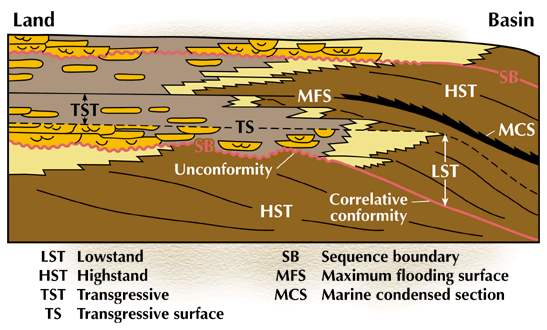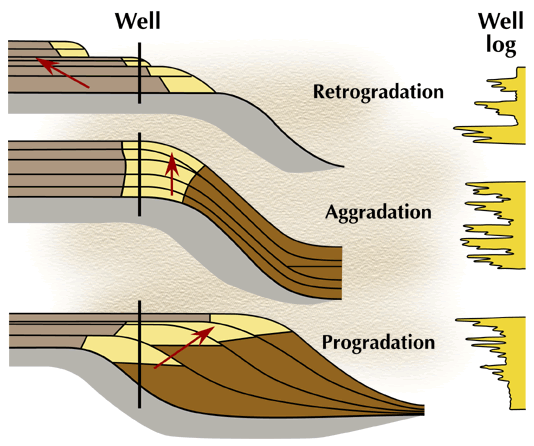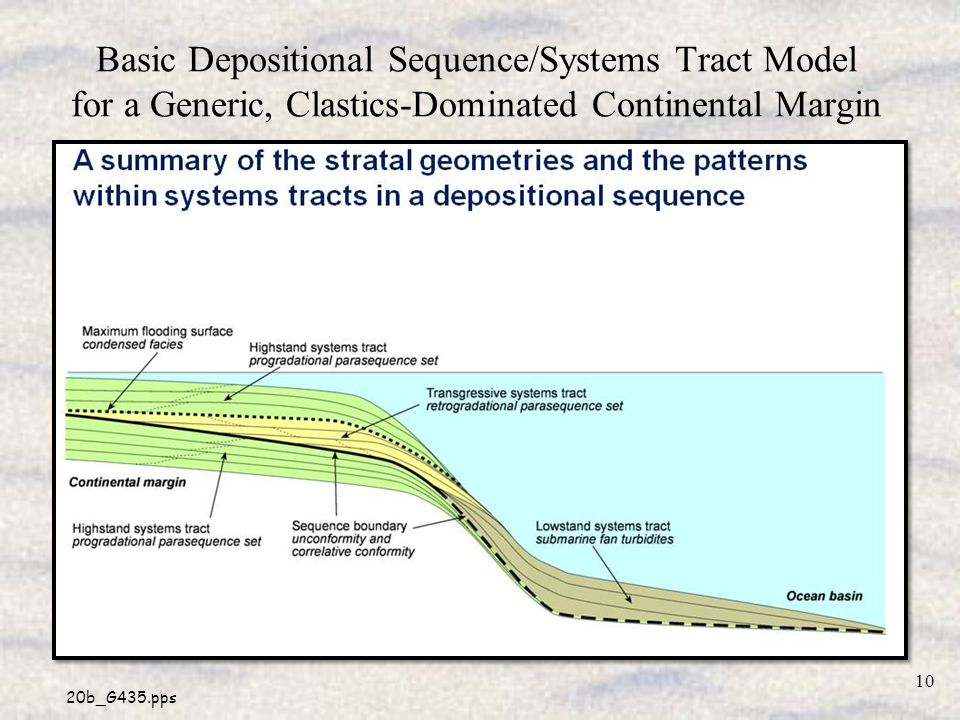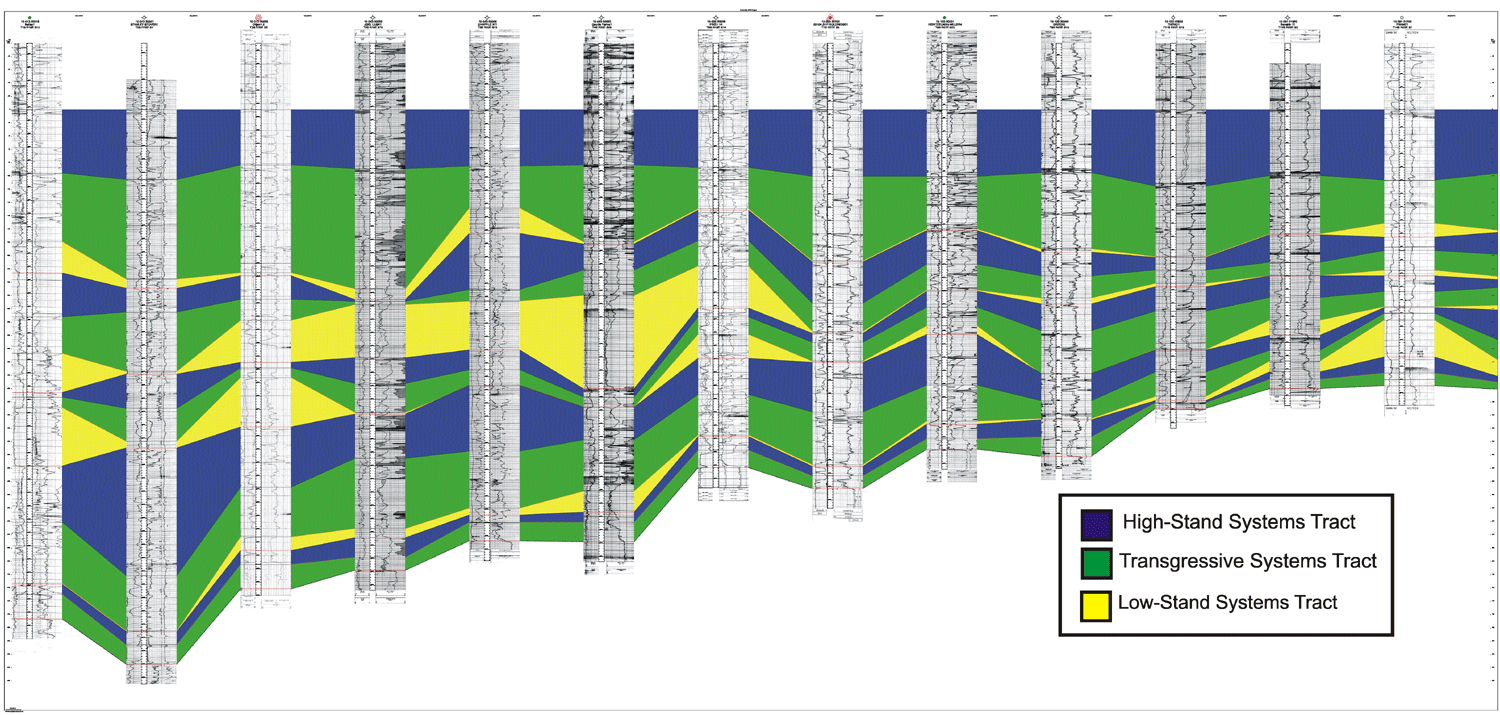High Stand System Tract
High stand system tract. A transgressive tract usually overlies the shelf-margin tract. A Dictionary of Earth Sciences dictionary. In this period of sea level highstand is formed.
Each systems tracthighstand lowstand and transgressivehas a different trapping potential based on the vertical and lateral distribution of lithofacies deposited within specific depositional environments. It is often abbreviated as LST. Highstand systems tracts typically include a continental topset and a marine foreset and bottomset.
Highstand System Tract HST HST terendapkan saat kenaikan muka air laut relatif mendekati posisi maksimum secara lambat sehingga memungkinkan tersedianya suplai sedimen yang cukup untuk progradasi dan downlap ke permukaan MCS dibawahnya. The lowermost systems tract above a type-2 sequence boundary see sequence boundary. The sediments of this systems tract include the Highstand System Tract of Posamentier and Allen 1999 and the high stand System Tract defined by Plint and Nummedal 2000 andor the systems tract termed the early lowstand systems tract ELST Posamentier and Allen 1999.
Optimal levels of digestive lipases promote efficient triglyceride lipolysis in healthy humans. A highstand systems tract HST occurs during the late stage of base level rise when the rate of sea level rise drops below the sedimentation rate. During the last sea-level cycle in the Adriatic basin were deposited 1 low-stand deposits formed during the Last Glacial Maximum LGM 2 transgressive deposits formed during the last relative sea-level rise and 3 high-stand deposits confined in a.
Lowstand systems tract maximum flooding surface parasequence parasequence. Source for information on highstand. The top of this systems tract is formed by the eroded unconformity surface that develops when a sea level fall initiates erosion of the now subaerial highstand system sediment surface and the start of the falling.
Characterized by a progradational to aggradational parasequence set this systems tract commonly includes a basin -floor fan a slope fan and a lowstand wedge. Engineering Business Oil Industry Gas Industry Society. Assuming air comes in through the nose the correct order is.
Stand on the shoulders of giants Sorry some features may not work when JavaScript is turned offPlease enable JavaScript in your browser for the best experience. The last parasequence 60 ky is Turonian in age and marks the transition to the argillaceous high stand system tract HST assigned to the overlying Kef Formation that surmounts a maximum.
Source for information on highstand.
IBD patients can also suffer from frequent diarrhea. The review evaluates current knowledge of the different lipases catalyzing triglyceride lipolysis in the human digestive tract focusing on their mode of action - information useful for developing strategies to regulate the bioavailability of fatty acid. The highstand systems tract consists of an aggradational to progradational set of parasequences that overlies the maximum flooding surface and that is overlain by the next sequence boundary. The lowermost systems tract above a type-2 sequence boundary see sequence boundary. Due to topographic irregularities at the stratigraphic level of the subaerial unconformity the nonmarine portion of the Lowstand systems tract may display a discontinuous geometry of depositional. The last parasequence 60 ky is Turonian in age and marks the transition to the argillaceous high stand system tract HST assigned to the overlying Kef Formation that surmounts a maximum. Low- and high-accommodation systems tracts may provide a more realistic approach to describing fluvial deposits in a sequence stratigraphic framework. White presents an excellent review of trap types within facies-cycle wedges which are related to transgressive-regressive cycles and can be. Abbreviation is mostly used in categories.
Which sequence shows the correct order of the components of the respiratory system. Abbreviation is mostly used in categories. Highstand systems tract maximum flooding surface parasequence sequence boundary sequence stratigraphy. As sea level recovered in the early Turonian the Lowstand Systems Tract gave way to a Highstand Systems Tract at 90 Ma. The last parasequence 60 ky is Turonian in age and marks the transition to the argillaceous high stand system tract HST assigned to the overlying Kef Formation that surmounts a maximum. As the parasequences pass from aggradational to progradational stacking the flooding surfaces are increasingly subdued at the expense of overall shallowing. During the last sea-level cycle in the Adriatic basin were deposited 1 low-stand deposits formed during the Last Glacial Maximum LGM 2 transgressive deposits formed during the last relative sea-level rise and 3 high-stand deposits confined in a.



























Post a Comment for "High Stand System Tract"